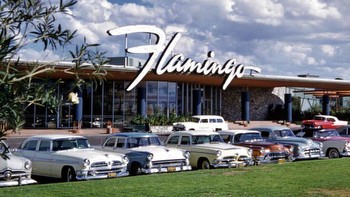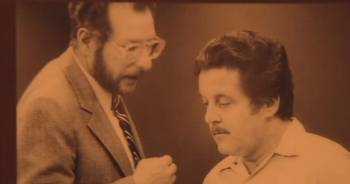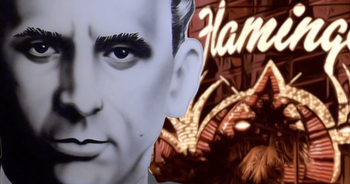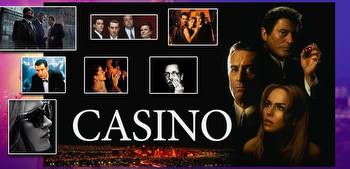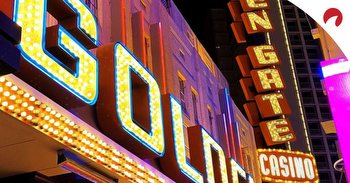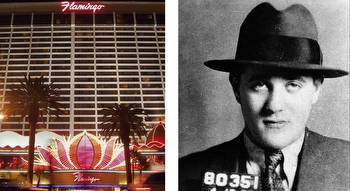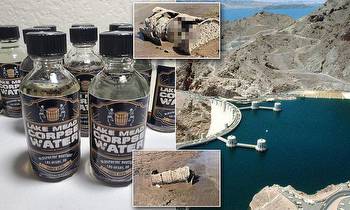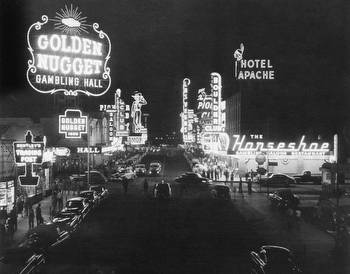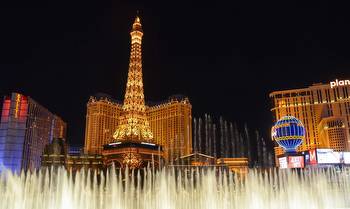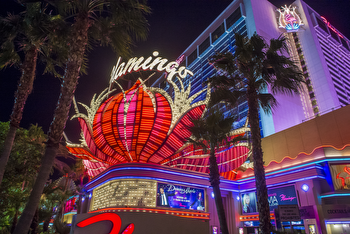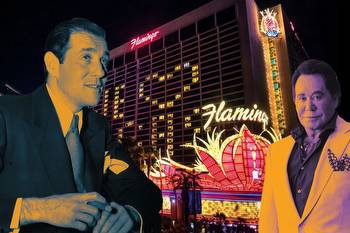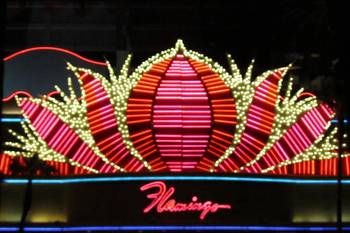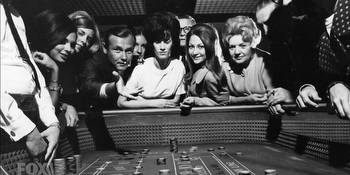Who Killed Bugsy Siegel, Kingpin of the Las Vegas Mob?
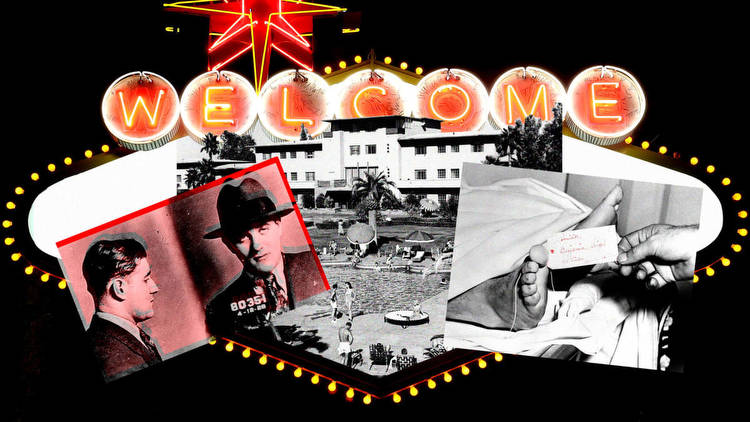
The business got off to a rough start. It was over budget—way over budget—and there were whispers that some money had mysteriously disappeared from the investment pot. It was so rainy on opening day that the high rollers and celebrities stayed away, and somehow the proverb that the house always wins did not initially apply. The Flamingo was forced to close its doors two weeks after opening—and after losing $300,000 to some very lucky gamblers—for a reset.
But all of that was washed away, surely thought, when the Flamingo reopened three months later complete with a newly finished hotel and quickly began to make money. It was one of the first hotels on the strip to embody what would become: glitz and glam, high-end entertainment, and luxurious amenities.
It was a huge success for Siegel, the “one-time public enemy” (as newspapers loved to refer to him) who had made his fortune and fame from coast to coast in organized crime. He was associated with men engraved in mob history—“Lucky” Luciano, Meyer Lansky, . He was a stone-cold killer, a gambling don, a drug lord, and a pimp. And now, he was also a hotelier and casino magnate.
But even if he had finally made good for his underworld investors, his sins of theft and mismanagement in the early days of the Flamingo could not be wiped away. Or maybe it was his sin of violence against a man who nursed a deadly grudge along with his wounds. Or maybe it was his sin of plotting to take out his oldest friend, a scheme that angered both that friend and the man having an affair with that friend’s wife.
We may never truly know—the mystery remains unsolved. What is known is that on June 20, 1947, three months after the re-opening of the Flamingo, Siegel was sitting on his girlfriend’s Beverly Hills couch reading a newspaper when shots blasted through the window. One of the most notorious American gangsters was dead. To this day, his murder remains an open case.
“Ben Siegel did not invent the luxury resort-casino,” Robert Lacey wrote inMeyer Lansky: The Thinking Man’s Gangster. “He did not found the Las Vegas Strip. He did not buy the land or first conceive the project that became the Flamingo. But by his death he made them all famous.”
“Crazy as a bedbug”
Bugsy Siegel lived the American Dream, just not quite in the manner that the early American myth-makers intended. He grew up poor in the seedy-side of Brooklyn and decided to better his circumstances by joining the organized crime in his neighborhood.
He worked his way up from the protection racket to forming his own gang and becoming affiliated with the infamous Murder Incorporated group.
His star rose so high in the New York crime world that he gained a fierce reputation. It was here that Ben Siegel picked up the nickname “Bugsy.” He was so volatile and violent that people would say he was “crazy as a bedbug.” They did so at their own risk.
“My friends call me Ben, strangers call me Mr. Siegel, and guys I don’t like call me Bugsy, but not to my face,” Siegel once said.
But with that reputation also came a target on his back. After special prosecutor Thomas Dewey labeled Siegel New York’s number one public enemy, Siegel decided to take his affairs to the west coast in 1936. There, he continued growing his skills (ahem, rap sheet), his connections (he added Hollywood legends to his contacts), and his kill list (he bragged that he had murdered 12 people).
So much of Siegel’s life is mired in speculation. Did he or did he not kill New York mob legend Joe Masseria in the early 1930s? Signs point to no, but the lore around his involvement persists. Was the rose garden at the Flamingo fertilized with the bodies of three disappeared rivals? It’s impossible say for sure, but it certainly makes for a grisly story.
But there are other episodes that are riotously colorful, known to be true, and that show how crazy Siegel’s life could get. While living on the West Coast, Siegel racked up enough of a fortune to buy a house in Beverly Hills and begin fraternizing with some of the leading celebrities of the day like Frank Sinatra and Cary Grant. His ties to Hollywood were further solidified when he began dating actress Virginia Hill in the late 1930s.
It was with some of these new friends that he got up to two of the most intriguing events of his life. In 1938, Siegel put together a champagne-laden cruise to the waters off the shores of Costa Rica on a hunt for gold. The trip was bankrolled by a countess, included several silver-screen luminaries, and was organized based on a treasure map Siegel had found. The return trip was not so rosy and the group eventually abandoned ship.
“Law enforcement was well aware of much of what he was up to—they just weren’t able to catch him.”A year later, Siegel once again teamed up with the Countess in a plan to sell a new type of explosives to Mussolini. Unfortunately, their business fizzled out when it was discovered during a live demonstration that “atomite” didn’t actually have the explosive power that they had advertised.
As Siegel was scheming his way around the globe, he did not fly under the radar. Law enforcement was well aware of much of what he was up to—they just weren’t able to catch him. He was arrested many times, but the only charges that stuck were two small gambling offenses punishable by fine.
A year before Siegel’s death, J. Edgar Hoover decided to ratchet up the FBI’s attempts to nab the mobster. On July 18, 1946, he wrote a memorandum requesting approval to set up surveillance across the country.
“At this time, I also wish to point out that Siegel, because of his far-flung interests, is almost in constant travel status, thereby making it extremely difficult at times to follow his activities and anticipate his movement,” reads Hoover’s note that now sits in Siegel’s FBI file. “It is recommended, therefore, that authority be granted to cover any hotels, residences, or places of business which might be used by Siegel in his journeys throughout the country. I strongly feel that this type of coverage is necessary if we are to establish his racketeering connections.”
Hoover would never have the chance to bring Siegel to justice. The crime lord’s downfall would center—maybe, probably—around his last business scheme, one that at least had a whiff of legitimacy to it.
In 1945, Siegel discovered a floundering hotel project in Las Vegas and became inspired by its possibilities. He convinced his rich, criminal colleagues to bankroll him, and he took over the Flamingo. The hotel and casino was supposed to cost $1.2 million to complete. It ended up costing $6 million.
The massive mismanagement and expense no doubt angered Siegel’s investors. But what might have made them even more enraged were the whispers that some of the money had been intentionally mislaid. Some sources suggest Siegel was guilty of skimming from the construction funds; others that it was his girlfriend, Virginia Hill, who had deep ties and a long history with the mafia; still others that there might not have been theft, but that suspicions were inevitable when a project is nearly $4 million over budget and helmed by a known criminal.
In the days after nine shots pierced the window of Hill’s home and instantly killed Siegel where he sat on the couch, the police would be overrun with theories. The underworld was suddenly rife with speculation, hearsay, and whispers about what deals might have gone bad or what double crosses might have happened. Hill was in France at the time—had she been tipped off to the planned assassination?
No one knew anything and that’s pretty much how the case stayed. It was known that Siegel’s associates led by Meyer Lansky weren’t happy with their last piece of business with him, and there was talk that a secret meeting had taken place in Cuba where it was decided that Siegel had to go. That seemed the most likely option, especially given that several of these former partners took over the Flamingo minutes after Siegel’s death, but nothing could be proven.
“I’ll have Moe shot, chop his body up, and feed it to the Flamingo Hotel’s kitchen garbage disposal.”Then there was talk that maybe it was revenge for a brutal beating Siegel had given to an unnamed man, or possibly retribution from one of Hill’s brothers because of the notoriously volatile relationship between Hill and Siegel.
A break in the case seemed to come in 2014 when LA Magazine in which the son of Moe Sedway, a longtime partner and friend of Siegel’s, revealed a family secret. He said his mother once told him that his father had been behind the killing.
As the story goes, Siegel had violently threatened Sedway’s life after becoming frustrated with Sedway’s role overseeing the financial affairs of the Flamingo at the behest of Lansky. “I’ll have Moe shot, chop his body up, and feed it to the Flamingo Hotel’s kitchen garbage disposal,” Siegel allegedly said during a meeting. When Sedway got word of the threat, he, his wife, and his wife’s lover, Moose Pandza, decided to go on the offensive. Panza carried out the killing at the request of Sedway and his wife.
It’s a compelling theory, but it lacks the conclusive proof needed to officially close the case. Regardless of whether it was Siegel’s best friend or his mob boss that was behind the killing, Siegel probably wouldn’t have been too surprised.
When the general contractor for the Flamingo confessed to being nervous about his job given the shady types involved in and hanging around the construction of the new hotel, Siegel quickly reassured him that he was safe. “We only kill each other,” he said.








